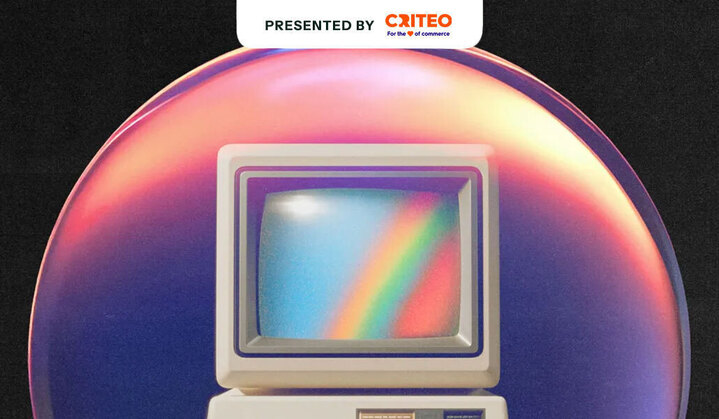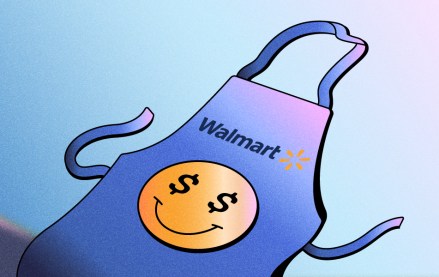Register by Jan 13 to save on passes and connect with marketers from Uber, Bose and more
How AI is rewriting the rules of search and shopping – by the numbers

Generative AI is taking over the discovery phase, thanks to shoppers starting their online search with AI platforms like ChatGPT, Google Gemini or AI Mode. But as is with all things AI, changes are moving faster than marketers and their tech stacks can keep up with.
No doubt, generative AI has become a permanent fixture in marketers’ tool kit. The question is if said tools have advanced enough to close the gap between shopper behavior and marketing infrastructure.
Research and data points paint a picture of marketers struggling with measurement, fragmented ad tech stacks and operational readiness amidst shoppers’ rising expectations for personalized recommendations and faster check outs.
Digiday parsed through the numbers to help pinpoint where marketers stand at the intersection of AI commerce and search. Here’s what you need to know:
Shopping via chatbots
AI has upended the world of search. Whereas consumers used to start with a keyword search on Google, 68% of shoppers across the world have used AI tools like ChatGPT to shop, according to a report published by creative agency VML. In other words, keywords are being replaced with questions, blurring the lines between search as a performance marketing function and a brand marketing one.
And that’s just the beginning. Looking ahead, the VML report states that 52% of shoppers are excited about having a personal shopping agent. Meanwhile 40% of shoppers are willing to fully delegate online shopping to an AI assistant, per research from Equativ, a media platform.
Still, the uncanny valley hasn’t arrived quite yet, seemingly leaving marketers to watch how the zero-click reality plays out for publishers before springing into action themselves.
“LLMs right now do not talk to other LLMs. If you have an agent on your brand website, Google AI Mode is not talking to that agent yet, but that’s probably going to happen in the future,” said Simon Poulton, evp of innovation and growth at Tinuiti.
Search is splintering
What’s known is the way that shoppers start their online shopping journey has changed thanks to AI – 33% of users say they use traditional search engines less, per Equativ’s report. And 62% of marketers have seen a decline in clicks and web traffic from search, according to recent research from Acquia, a software company. A recent report from Adobe says 52% of consumers believe AI will replace traditional search engines for product searches within five years.
Brands and their agency clients are shifting spend and strategies to be less reliant on traditional search as the decline continues—at least that’s the case for Chris Rigas, vp of media at Markacy. In the last year, clients have spent less on search, hedging their bets instead on things like CTV, Meta and in some cases, TikTok, he added. (Rigas did not provide specific client spend figures).
However, marketers are still trying to figure out how to best show up in AI chatbots, Google AI Overviews, Google AI Mode and other AI-powered search functions. While 70% of marketers believe Answer Engine Optimization (AEO) will reshape digital strategy in the next one to three years, only 20% of marketers are implementing it, per Acquia’s report.
“[AI search] is obviously right now growing super fast, but still smaller than search portion of the bucket as far as how people are discovering things,” Rigas said. “The tactics used right now to show well in ChatGPT or in a Google AI Overview are similar, but slightly different, than what you would do just to rank well organically in search.”
Change is coming, but adoption is slow
It’s not that marketers are dragging their feet when it comes to AI search, but there are too many moving parts and unknowns leaving them on the defensive. “Nobody wants to be the case that they screwed something up,” said Julia Wold, vp of digital investment at True Media. At the same time, she added, “Everybody is building the plane as they’re flying it.”
To put some numbers to it, 84% of brands fail to claim one of their top three most-searched keywords, per research from IPG’s Agentic Systems for Commerce unit.
Blame the holdback on things like unclear measurement, lagging tech infrastructure and to Wold’s point, a fear of moving too fast. Current Answer Intelligence Optimization (AIO) and Generative Engine Optimization (GEO) tools are still in flux while marketers sort through what success looks like in a zero-click future.
“There’s a larger discussion that needs to happen around: how do you even think about measurement here,” Tinuiti’s Poulton said.
More in Marketing

Inside the brand and agency scramble for first-party data in the AI era
Brands are moving faster to own first-party data as AI and privacy changes alter the digital advertising landscape.

Walmart Connect takes a play out of the Amazon playbook to make agentic AI the next battleground in retail media
The next retail media war is between Walmart Connect’s Sparky and Amazon’s Rufus, driven by agentic AI and first-party data.

What does media spend look like for 2026? It could be worse — and it might be
Forecasts for 2026 media spend range from 6.6% on the lower end to over 10% but the primary beneficiaries will be commerce, social and search.








